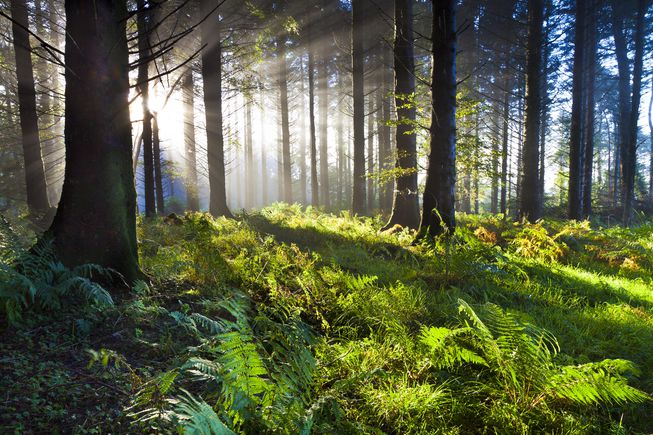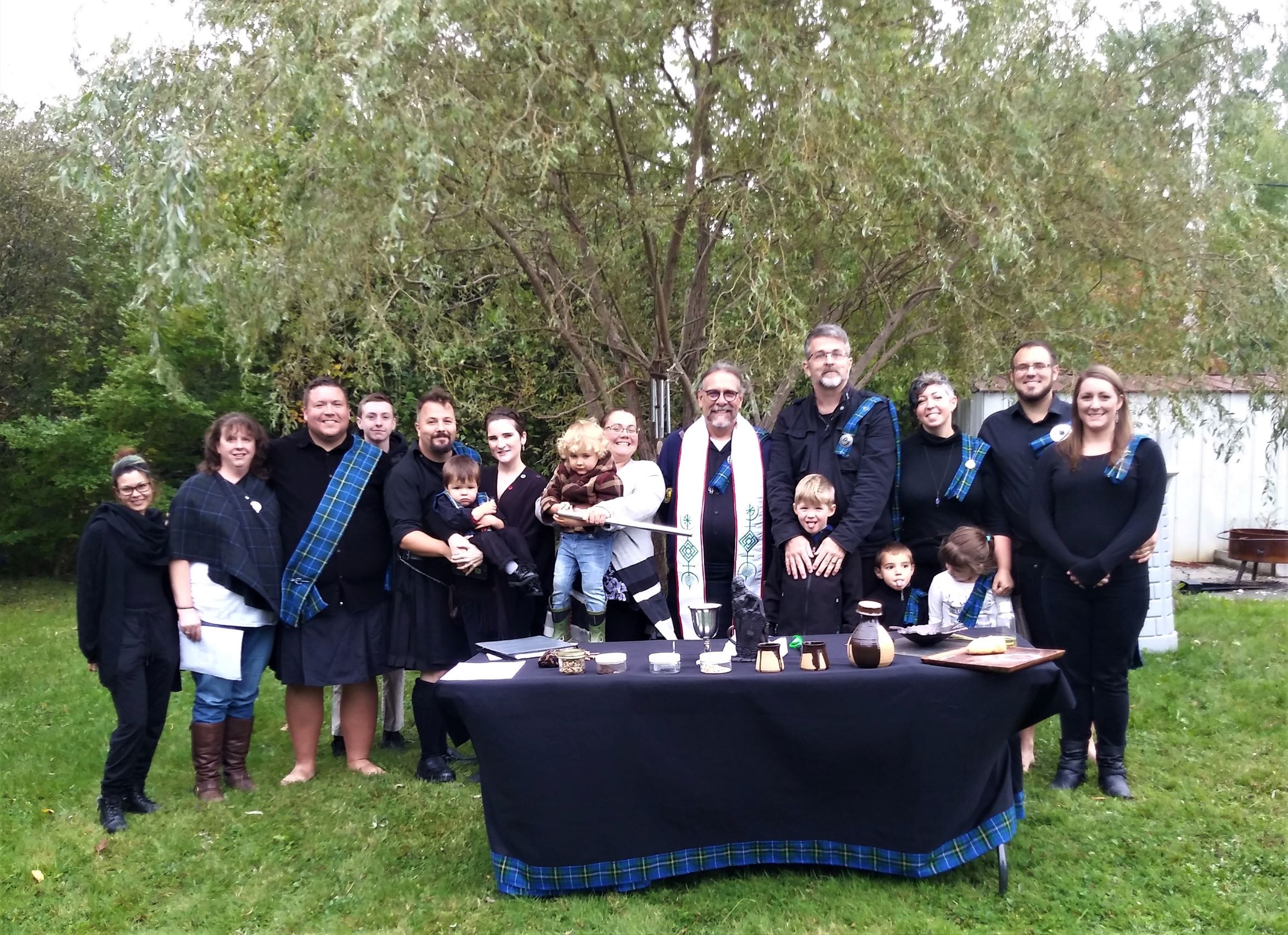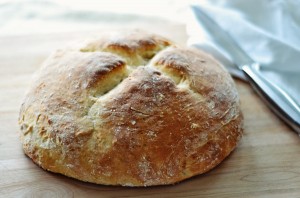
BLOG
Making your own incense
This week we looked at making our own incense as another means of being creative and further connecting with out grove members / values. We had a blast and we documented the whole thing for you so have a look.
Firstly you will need a few simple tools:
Blank Incense Sticks
Dropper
Small Dish
Oils of choice
An Olive Oil Dish
Jars
I say you need these – you don’t NEED all of them but they will make it a whole lot easier and tidier.
Firstly, you should know the difference between Fragrance and Essential oils. There are many factors to consider but to put it simply, Fragrance Oils are chemically created, and Essential Oils are naturally derived. Each has its merits, and some may be stronger than others so be sensitive to those around you and to yourself when you are choosing. You should also know that some of these oils can be corrosive so be careful and cover any surface you deem precious.
Lets get started:
Set your Blank Incense Sticks out in your Olive Oil Dish.
Each stick will require about 20 drops (1ml) of oil to fully saturate the stick. Grab your bottle or small dish if you have mixed oils and your dropper. Have fun with it — mix and match your scents.
Load the Dropper up and start to work your way down the stick one drop at a time watching how the oils spreads. Go all the way from one end to the other but stop at the stem, that wont burn anyway. Because the sticks aren’t all perfectly uniform you may need a couple more or fewer drops depending on the size of the stick.
Once you are confident the sticks have been fully covered set them in a Jar to dry for a minimum of 24hours.
There! You did it! You made your own incense sticks! Find what connects/relaxes you and enjoy.
Always remember to burn your incense safely with a proper holder. I have seen people stick incense in potted plants and regret it later. Never leave your sticks burning when you are not around to supervise, where there is an ember, there could be a flame.
Blessed be.
A visit from the ArchDruid of ADF
Last week, our grove had the pleasure to host the current ArchDruid of ADF, Jean “Drum” Pagano for a few days in our little corner of the world. To say that I found the experience to be both humbling and deeply inspirational, still wouldn’t do this visit justice, but I will do my best.
You can only learn so much about a person by interacting with them online. Over the years I have always been pleased with the Mother Grove’s general leadership, but it was a wonderfully reaffirming experience to have a leader of our faith travel to the Maritimes, with a sincere interest in learning who we are, and how we represent ADF in Nova Scotia. To find that leader to be intensely knowledgeable, deeply considerate, and without a demonstrable hint of ego, just further reaffirmed my confidence in both my personal path, and the direction of our organization’s leadership.
After picking up Drum from the airport, we proceeded (in somewhat typical Nova Scotian fashion) immediately to a local pub, and dove right in to wonderful discussion of everything from religion and politics, to our grove’s borderline obsession with bacon.
Despite some fairly wet weather, we were determined to do some sightseeing the following day, stopping at the Atomic Cafe (an excellent, Druid-owned coffee shop), York Redoubt (a historical site and national park where we frequently conduct public rituals) and Peggy’s Cove (a classic NS tourist spot). After a quick supper at the home of the amazing hosts Brian & Karen, a few of us joined Drum for a live radio interview on the local pagan program “The Witching Hour”. Despite the late hour and busy day, Drum still happily continued the conversation and questions that spun out from the interview at a local coffee shop.
Saturday was again a flurry of activity with a quick visit and breakfast at the Halifax Seaport Market, followed by two wonderfully informative free public talks on the history of Druidry, and devotional work as a part of pagan practice.
Following the talks, we toured the Halifax Public Gardens, before continuing on to the home of our members Marc and Lily, for a ritual of welcome and a potluck.
A special thanks to Brian and Karen Larter, without whom, this visit may not have happened – and who opened their home not only to Drum but also to the tagalong van den Hoek family, and were most excellent hosts. Thanks also to Marc and Lily Meadows, who opened their home to the whole grove on Saturday for a fantastic ritual and potluck. Thanks also to Kelly Moore, Don Adams and Dan Negus, for bringing us on the The “Witching Hour” on CKDU radio.
We are so grateful for the opportunity to have hosted a member of the mother grove. May we continue to grow stronger together… “as fast as a speeding oak“ ;)
Summer Solstice Activities
With the Summer Solstice quickly approaching I felt it prudent to get a post out about some fun activities that you can do by yourself; with your girls; or with your family.
Whatever your pantheon, the Summer Solstice focusses on honouring the sun. There are many things that you can do to celebrate and enjoy the sun. The summer solstice marks the longest day of the year, the day with the most sunlight and what better way to honour that gift then to spend as much time as you can out soaking it up. Grab your sunscreen and try one of the following activities.
You can make some Sun Tea. Grab yourself a nice jar and pop in some water and edible herbs and let the tea steep by the heat of the sun. Some herbs to consider our mint, rosemary, basil, lemongrass, cilantro, lavender, chamomile and if you can get your hands on it some hibiscus to brighten it up and sweeten the deal.
You can go for a walk; a run; or a swim! Enjoy the outside as much as you possibly can with your friends and family. Have fun using the gift the gods have granted us.
You can make flower wreaths either for your door or your head. Go outside and find as many wildflowers as you can and make them into a beautiful crown or decoration for your door. This is a fantastic activity to share with children and will be greatly enjoyed by those with friends and family.
If you are looking for more contemplative activity you can try doing Sun Salutations outside. Grab your yoga mat and salute the sun. This is a fantastic way to the get outside, enjoy the sun and get a little exercise while still maintaining quiet reflection.
Gardening is always a fantastic idea for the longest day of the year. You can do this alone or with friends. If you have already started your garden you can spend some time reading it or rearranging. Time spent in the garden is never wasted.
Finally, if the weather is poor or you are on able to go outside but would still like to celebrate you can create a gratitude journal. Grab a pen and paper and reflect on everything that you are grateful for. The sun and more Vitamin D tend to revitalize many of us and we should be grateful for it. Along with the renewed energy of summer often come renewed projects or new endeavours. Take a moment to write those down. Something else that can be great exercise is to share this with your family. Have everyone share something they are grateful for every day or even set up a chalkboard to write things on to be shared with your family.
Again, there are many ways to celebrate this holiday and I encourage you to explore them all.
Brightest blessings
The Awen
When you think of Druids, a few things often come to mind: trees, acorns, and the awen. This last, the awen, is of particular interest to us as it is the symbol of our grove. So, what does it mean, what does it stand for, and why is it important to us?
Awen, pronounced “ah-when”, is derived from the Indo-European root *-uel, meaning “to blow”, and has the same root as the Welsh word awel, meaning “breeze’”. There is a parallel word to ‘awen’ in Irish, ai, which means “poetic inspiration”.
In the Welsh tradition, the awen is seen as the spark of creative or divine inspiration or illumination. It is that which motivates an idea and gives it form. It’s likeness can be meditated upon to draw creative insight for artistic projects of all kinds.
The three dots, or “points of light”, represent the triple aspect of Deity and, on another level, the rising of the sun on the equinoxes and solstices.
The three “rays of light” serve to remind us of the importance of the number three, a sacred number in druidry, as it is in many pagan paths. It is represented, for example, by the three realms: land, sea, and sky (or middle world, upper world, under world); the three methods of studying/experiencing druidry: the bard, the ovate, and the druid; and the “triads”, which were ancient Celtic laws and bits of wisdom expressed in threes.
The awen represents not only inspiration but also the creation that ensues and the spirit embedded in it. These are qualities important to any Druid, ancient or modern.
Imbolc Ritual Invite
The Grove of Nova Scotia Druids will be conducting an open Imbolc Ritual at the Universalist Unitarian Church (5500 Inglis St, Halifax, NS) Saturday, February 6, 2016 at 6:30pm.
All are wecome!
Please check out the Facebook event here.
Making a living as a Druid...
I try to keep up to date with blogs and posts regarding Druidry… it’s mostly our grove does this or here’s a pretty motivational poster… but, as I scrolled though one of the many Druidry groups, I came across the following question: “ Can I make a living as a Druid?”. My first impression was that this is a stupid thing to ask… but I should hear them out.
The post started with a question and was followed up by people’s suggestions for possible career paths: farmer, butcher, crafts person, park ranger, writer or teacher. Some even suggested cultivating a life as a self-sustaining “off the grid” individual. These all seemed like reasonable suggestions, but at the same time I know people who are employed in like careers who are NOT Druids. So where’s the line? Perhaps these career paths will help keep you closer to nature and Druidic Values, but I am not convinced they really addressed the question.
In our Grove, we have a variety of career paths. There is a photographer, a couple of guys in the navy, a chartered accountant, a nurse, an academic, and I am a human resource professional. We each seem to be doing alright…and because we all actively work in these careers, which provide both skills and monetary gains, we are able to provide a certain level of support to each other and our families.
Druidry, like any other religion does have jobs that need doing and choices for employment that are more akin to the overall value system, but, to me, Druidry is more a way of life and not necessarily how you make you financially sustain yourself. It can be hard to do this ethically, but a job does not have to define who you are at your core. You can perform in almost any job and still lead a simple life and remain close to nature. It all has to do with lifestyle choices, values and how you live at home. True, there are some career choices that just flat out do not fall in line with Druid Values, but even so there can be balance.
In modern society, people practically must have money to survive. Contributing and taking from the economy is what drives it’s momentum and allows for progression, such as medical advances and a wider spread of ecologically friendly ways and means. From my perspective —and trust me I am not the only one who views things in this light— by participating as an active member of modern society while following a Druidic Path, I feel as though I am aiding in multiple communities, not just my own. Additionally, as far as I am aware, Druids have never had a policy of living lives of poverty, unlike certain other religions. That said, in Druidry there isn’t really a need to suffer for your faith. Moreover, as a productive and proactive person, you would be better able to contribute to Druidry and its continuation by better educating yourself, procreating future little Druids, and having the means to share this with others who are interested in a Druid way of life.
In the end, I guess the answer is, “YES you can make a living as a Druid!”... in the same way you can make a living while being part of any other community. Do what you do, do [hopefully] what you love and are good at, and the rest will follow.
Closing Rituals
A couple weeks ago before the Grove attended AEGIS we were informed that no one had offered to do the Closing Ritual.
Thinking it couldn’t be that hard to write something and find sources we volunteered and began the arduous process of looking around for ideas…. Everyone had something to contribute but we would have to make it ADF format AND we wanted it to be interactive for the guests. After two weeks of not finding anything at all online or from the other Groves and Groups we decided to go out on a limb and throw something together.
Let me tell you… we had a ball. It all went off without a hitch and everyone seemed to really enjoy it.
We handed out copies of the Processional Chant, We Approach the Sacred Grove and had everyone sing along while we purified the space and guests. In the end (you wont see this in the written document) we closed a circle that had been left open by the Opening Ritual. Although circle casting is not a Druid tradition we felt it was a nice tie back and gave everyone a sense of completion and closure.
Let me elaborate a little more on that so you can get the experience…. Day one of the festival the wonderful Mave led an eclectic opening ritual and had everyone hold hands. From there, everyone turned to the person on their left and with hands clasped touched from heart to heart while saying “From my heart to your heart, the circle is open”. At the end of her Ritual she explained that she would leave the circle open to promote the full experience of the weekend retreat. It was a nice touch.
To make it easier for you at home and hopefully for others who find themselves in similar boats we decided to post our ritual (formatted to Grove and ADF standards).
I hope you enjoy and please email in if you have any questions.
Lughnasadh: A time of Harvest & Feasting
Lughnasadh is a time of harvest and what better way to celebrate a good harvest then by having a feast! Lughnasadh feasts have been a tradition for years. Villages and families come together to share what they have gathered and enjoy all of the bounty we have worked for and that mother earth has made possible for us.
Anything that grows on your land is suitable for a feast but if you are looking to outsource a little here are some seasonal and traditional foods:
Corn Broccoli Carrots Chilies Cucumbers Fennel
Beans Onions Peas Potatoes Radishes Bilberries
Blueberries Raspberries Blackberries Redcurrants Tomatoes
Chicken Lamb And fish
Lots of options in there…
Like any high day it is always a good thing to add some bread to your meal. It can be better still if you make it by hand. The house will smell of fresh loaves and your family and guests will delight in the aroma.
Try making it by hand for an added touch. I am partial to this recipe. It has never steered me wrong and as long as you follow the directions, it can be a lot of fun.
Some interesting tips I have picked up over the years… do not make bread on a rainy or muggy day. It simply does not rise. And something else that can be fun is adding a little extra sugar to your mix and then when the bread is hot and fresh gently brushing the top with a butter and sugar mixture to give it a nice sweet taste. I mostly like this for weddings or tea parties over buns. And finally if you are really looking to get creative you can add ground and dried herbs from your garden for some added flavor. I am partial to rosemary.
Simple White Bread by Hand
Total Time: Prep: 20 min. + rising Bake: 30 min. + cooling
Makes: 32 servings
Ingredients:
- 1 package (1/4 ounce) active dry yeast
- 2-1/4 cups warm water (110° to 115°)
- 3 tablespoons sugar
- 1 tablespoon salt
- 2 tablespoons canola oil
- 6-1/4 to 6-3/4 cups all-purpose flour
Directions:
- In a large bowl, dissolve yeast in warm water. Add the sugar, salt, oil and 3 cups flour. Beat until smooth. Stir in enough remaining flour to form a soft dough.
- Turn onto a floured surface; knead until smooth and elastic, about 8-10 minutes. Place in a greased bowl, turning once to grease the top. Cover and let rise in a warm place until doubled, about 1-1/2 hours.
- Punch dough down. Turn onto a lightly floured surface; divide dough in half. Shape each into a loaf. Place in two greased 9-in. x 5-in. loaf pans. Cover and let rise until doubled, about 30-45 minutes.
- Bake at 375° for 30-35 minutes or until golden brown and bread sounds hollow when tapped. Remove from pans to wire racks to cool.
- Yield: 2 loaves (16 slices each).
Enjoy! And Blessed Lughnasadh from everyone in the Proto-Grove of Nova Scotia Druids!
A Summer Solstice Tradition
Summer Solstice is a great time of year to relax and enjoy the sun (weather permitting). It is also a great time to collect and dry herbs. For me, I like to get a couple harvests out of some of my herbs but particularly my Mint Plants.
Did you know you can make your own Mint Tea? Grab yourself some baggies or better still a metal tea ball. Dry your mint and grind it up in something used only for food. I like my coffee grinder, gives me a good excuse to really clean it out. Mint can also be added fresh to ice cold summer drinks like water or mulled into fancy drinks like Mojitos.
Gathering Herbs this time of year is important. Like the sun they are at the height of their power and if they are to be used for magical purposes this will play a part. Each custom has its own suggested time to harvest. Some like to harvest first thing when the morning dew still rests on the leaves. Others prefer to go out at midnight and there are even a few who claim noon is the best time. I am partial to noon; it’s the height of the sun on the sunniest day of year? Just makes sense to me.
However you decide to do it, enjoy it. It can be a lot of fun to bundle, hang and dry what you’ve worked so hard to cultivate and now finally get to use.
Summer Solstice is a great time of year to relax and enjoy the sun (weather permitting). It is also a great time to collect and dry herbs. For me, I like to get a couple harvests out of some of my herbs but particularly my Mint Plants.
Did you know you can make your own Mint Tea? Grab yourself some baggies or better still a metal tea ball. Dry your mint and grind it up in something used only for food. I like my coffee grinder, gives me a good excuse to really clean it out. Mint can also be added fresh to ice cold summer drinks like water or mulled into fancy drinks like Mojitos.
Gathering Herbs this time of year is important. Like the sun they are at the height of their power and if they are to be used for magical purposes this will play a part. Each custom has its own suggested time to harvest. Some like to harvest first thing when the morning dew still rests on the leaves. Others prefer to go out at midnight and there are even a few who claim noon is the best time. I am partial to noon; it’s the height of the sun on the sunniest day of year? Just makes sense to me.
However you decide to do it, enjoy it. It can be a lot of fun to bundle, hang and dry what you’ve worked so hard to cultivate and now finally get to use.
Scholars eh??
It should come as no surprise to you that it can be challenging finding out information on Druidism. Anyone who has tried to look for something specific and may not have a resource such as a Grove or strong community can attest to this. What may come as a bit of a surprise is that a lot of what has been committed to writing has been done so by enemies (the Romans for example).
Amoung other things early Druids are well known for committing large sums of knowledge to memory and were regarded as scholars. Of particular value to them were the arts such as poetry and song. Learning and regaling these pieces in hopes that the Gods would be pleased and may grant gifts. So why not write it down? Good question! In his book “ Gallic Wars” Book VI, Caesar writes
It is said they (Druids) commit to memory immense amounts of poetry. And so some
of them continue their studies for twenty years. They consider it improper to entrust
their studies to writing…
The idea of course being that the regaling and passing of traditions be a right of passage and holding the knowledge a mark of status but, this makes modern study increasingly challenging. It really is a shame that did not work out…
Modern Druids are finding it increasingly important to document all proceedings. For our Grove, the ADF govern much of this and even request reports from Groves throughout the year. Many of us are creating Family Grimoires and are making contributions to a Grove Grimoire to ensure history can repeat itself. It is an uphill battle but one in which we all find strength. If you are finding this challenging please visit the ADF or OBOD website (links below). There is much to be learned and the internet is making the sharing of this information easier.















